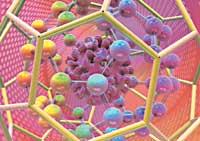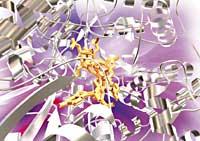Synthetic biology

The mention of the research of the Nobel Prize could also serve for biotechnology, especially considering that in that decade the first steps were taken to develop what we consider modern biotechnology. However, the basic, at least theoretical, ideas of synthetic biology go further. I say theorists because it is currently considered an ongoing research topic.
To easily understand what synthetic biology is, the simplest thing is to replace the word biology with chemistry. Synthetic Chemistry generates, manufactures and manufactures elements, compounds and materials present and not present in nature. Synthetic biology aims to do the same with biological elements: genes, proteins, membranes, cells. However, the practical part is much greater than theoretical, since biological systems are very complex. This is the argument used by the most believers. How are we going to copy what we only understand in part?
But some do. Synthetic biology exemplifies the reconstruction of the polio virus in 2002, or the fact that at the end of last year the same has been done with the influenza virus in 1918. Researchers have been able to create a genetic code for amino acids that are not used by themselves to produce proteins in nature. In fact, living beings combine 20 amino acids to form proteins, but they have already managed to create a code for another 30. They could produce proteins with 'new' properties, not present in nature, but that could be useful for humans, as well as synthetic materials.

Of these achievements there is a big difference to synthesize a cell, but some steps have already been taken: In 2001, for example, the development of a gallbladder capable of expressing proteins was achieved, and in 2003, from synthetic DNA, the production of proteins that formed channels within the cell.
In addition to copying biological systems, Synthetic Biology also seeks standardization. That is to say, it is a question of searching and grouping the basic units necessary to form a biological system, and then, like the engineers, to “catch” those that in each case were necessary to create whatever you want. Science fiction? Still yes. However, several research groups are looking for the minimum genes needed to perform the basic functions of life and the Standard Biological Parts Registry has been created by the pioneering research center MIT.
The third international congress on synthetic biology will take place in California this May. And from the European Union they also want to promote their research in this field (in the United States the previous steps have been taken). In the sixth Framework Program, Synthetic Biology is part of the set of new and emerging Sciences and Technologies and, as indicated in the call for projects, "the answers collected in the two previous calls show that Synthetic Biology is a field that has begun to walk effectively, with high scientific and technological potential, and that must be promoted decisively for its full integration and development in Europe."
Published in Berria
Buletina
Bidali zure helbide elektronikoa eta jaso asteroko buletina zure sarrera-ontzian











